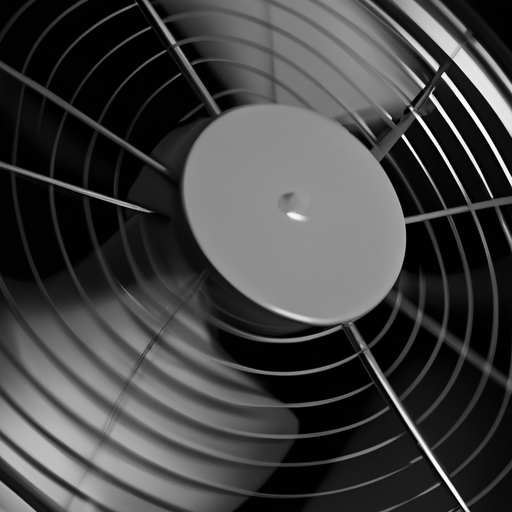In this article, we explore the correlation between CFM (Cubic Feet per Minute) and airflow. So, the question arises: does a higher CFM truly mean more airflow? We aim to shed light on this topic and uncover the truth behind the relationship between CFM and actual airflow. By understanding this connection, you’ll be armed with valuable knowledge when it comes to choosing the right equipment for your ventilation or cooling needs. Stick around as we unravel the mystery behind CFM and its impact on airflow.

Does A Higher CFM Mean More Airflow?
Table of Contents
What is CFM?
CFM stands for “cubic feet per minute” and is a unit of measurement used to quantify the flow rate of air. It represents the volume of air that can be moved in a minute. The higher the CFM value, the greater the amount of air that can be moved.
Understanding Airflow
When we talk about airflow, we are referring to the movement of air within a space. Airflow is influenced by three main factors: volume, velocity, and pressure.
Volume of Air
The volume of air refers to the amount of air being moved. It is measured in cubic feet per minute (CFM) and indicates how much air can be pushed through a defined space in one minute.
Velocity of Air
The velocity of air represents the speed at which the air is moving. It is usually measured in feet per minute (FPM) and determines how quickly the air can reach different areas within a space.
Pressure of Air
Air pressure is the force exerted by the moving air. It is measured in inches of water column (in. w.c.) and determines how effectively the air can be distributed and circulated within a ventilation system.
Factors Affecting Airflow
Several factors influence the airflow in a ventilation system. Understanding these factors is crucial in optimizing CFM for efficient airflow.
Duct Size and Shape
The size and shape of the ducts through which the air flows play a significant role in airflow. A larger and well-designed duct allows for smoother and more efficient airflow, reducing resistance and pressure drop.
Resistance
Resistance refers to any obstructions or restrictions that hinder the movement of air. These can include bends in the ductwork, filters, and other components that impede airflow. The higher the resistance, the more difficult it is for the air to flow, requiring a higher CFM to compensate.
Fan Efficiency
The efficiency of the fan itself influences airflow. A more efficient fan can move air with less energy, allowing for better airflow even with a lower CFM rating. Choosing a fan with a high efficiency rating is essential for optimizing airflow.
Speed Control
The speed at which the fan operates can also affect airflow. Adjusting the fan speed allows for fine-tuning the airflow to match the specific requirements of the space. Slower speeds are often more energy-efficient, while higher speeds may be necessary in certain situations.
Relationship Between CFM and Airflow
Understanding the relationship between CFM and airflow is crucial in determining the appropriate CFM rating for different applications.
CFM Definition
CFM is a measurement of the volume of air that a fan or ventilation system can move in one minute. It represents the capacity of the fan to deliver a certain amount of air, but it does not imply how effectively that air is distributed within a space.
Airflow in Real World Situations
In real-world situations, airflow can be influenced by factors beyond just CFM. Factors such as air distribution, static pressure, and air quality can impact how effectively the air is delivered to specific areas and how well the ventilation system performs overall. Therefore, it is essential to consider these factors in addition to CFM when designing and optimizing ventilation systems.
Optimizing CFM for Airflow
To optimize CFM for efficient airflow, several considerations must be taken into account.
Matching CFM to Application
It is important to match the CFM rating to the specific requirements of the application. For example, a small residential bathroom may require a lower CFM rating compared to a large industrial facility. Understanding the needs of the space and selecting an appropriate CFM rating ensures efficient airflow and adequate ventilation.
Balancing CFM and Energy Efficiency
While higher CFM ratings may seem desirable for better airflow, it is important to balance CFM with energy efficiency. Choosing a fan with an excessively high CFM rating can result in unnecessary energy consumption and increased operating costs. Finding the optimal CFM rating that meets the airflow requirements while maximizing energy efficiency is key.
Combining Multiple Fans
In some cases, combining multiple fans can be an effective way to optimize CFM for airflow. By evenly distributing the airflow across multiple fans, the workload is shared, reducing the strain on each individual fan. This approach can improve overall airflow and help maintain consistent ventilation throughout the space.
Importance of CFM in Ventilation
CFM plays a crucial role in ventilation systems, and understanding its importance is vital for ensuring indoor air quality, moisture control, and comfort.
Indoor Air Quality
Proper ventilation is essential for maintaining good indoor air quality. Adequate CFM ensures the circulation of fresh air while removing pollutants, allergens, and odors. Higher CFM ratings can help achieve better air exchange, improving the overall quality of the indoor environment.
Moisture and Condensation Control
CFM also plays a role in controlling moisture and preventing condensation in enclosed spaces. By increasing the airflow, moisture-laden air can be replaced more effectively, reducing the risk of mold and mildew growth. Proper CFM can help maintain optimal humidity levels and prevent moisture-related issues.
Temperature and Comfort
Efficient airflow, facilitated by an appropriate CFM rating, helps regulate temperature and enhance overall comfort. Proper ventilation ensures even distribution of conditioned air, minimizing hot and cold spots and maintaining a comfortable environment.
Limitations of CFM as a Measure of Airflow
While CFM is a useful measure, it does have certain limitations that should be taken into consideration.
Air Distribution
CFM does not fully represent air distribution within a space. Even with a high CFM rating, poor duct design or placement can result in uneven airflow. Proper ductwork and design considerations are essential to ensure efficient and balanced air distribution.
Static Pressure
CFM alone does not account for the static pressure in a ventilation system. Static pressure refers to the resistance that the fan must overcome to move air effectively. High static pressure can hinder airflow, even with a higher CFM rating. Evaluating both CFM and static pressure is crucial for designing an efficient ventilation system.
Air Quality
While CFM can help remove pollutants from indoor air, it does not guarantee optimal air quality on its own. Other factors such as filtration, air exchange rates, and airborne contaminants can impact air quality. Considerations beyond just CFM should be taken into account when addressing air quality concerns.
Additional Considerations
When choosing a ventilation system, several additional factors should be considered alongside CFM.
Noise
The noise generated by the fan can be an important consideration, especially in residential or noise-sensitive environments. Fans with higher CFM ratings often produce more noise. Selecting a fan with an appropriate CFM rating that meets both the airflow requirements and noise restrictions is crucial.
Cost
The cost of the ventilation system is a significant consideration. Higher CFM ratings often come with higher price tags. However, it is important to weigh the initial cost against the long-term benefits of energy efficiency and adequate airflow.
Maintenance
Maintenance requirements should also be considered. Fans with higher CFM ratings may require more frequent cleaning or filter replacement. It is important to factor in the additional maintenance costs and efforts when selecting a ventilation system.
Conclusion
CFM is a vital measurement for quantifying the flow rate of air in ventilation systems. While it represents the volume of air a fan can move, it does not necessarily guarantee efficient airflow. Factors such as duct design, resistance, fan efficiency, and air distribution must be considered in conjunction with CFM to optimize airflow. By understanding the relationship between CFM and airflow and taking into account other relevant factors, it is possible to create an efficient, balanced, and effective ventilation system that ensures good indoor air quality, controls moisture and condensation, and enhances overall comfort.


